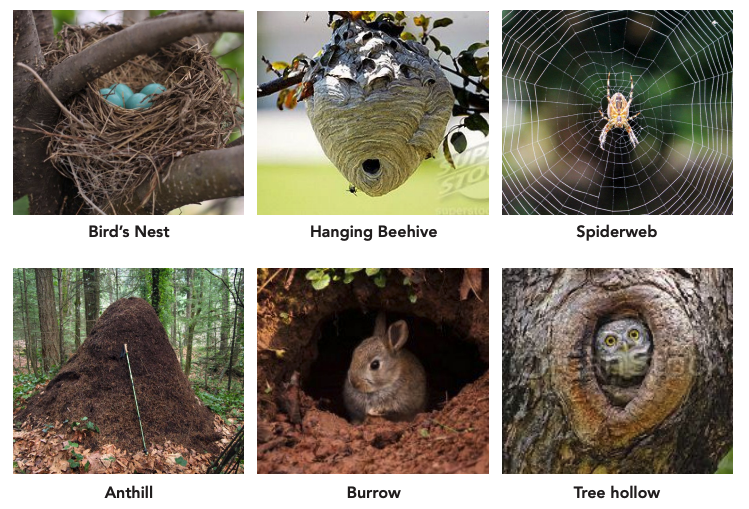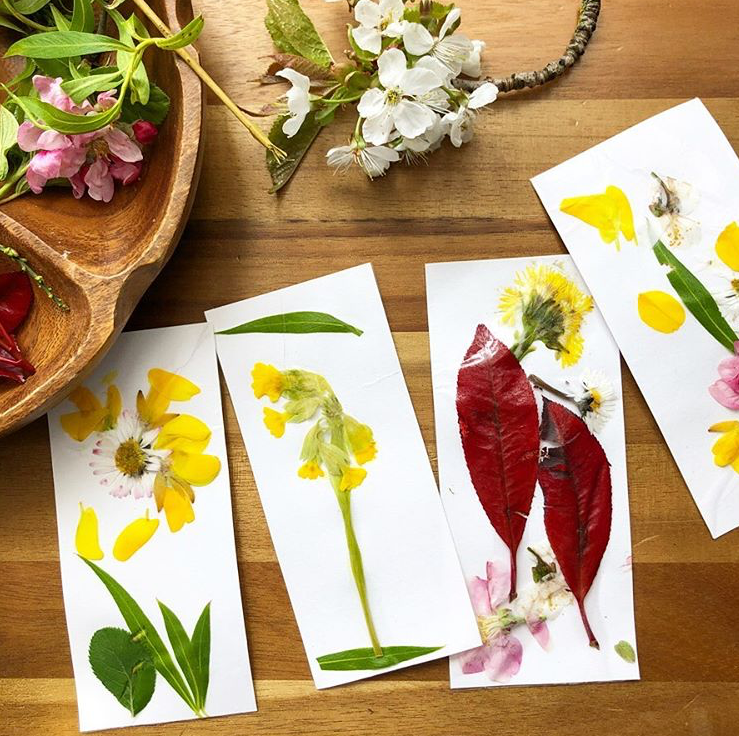Outdoor Exploration Activities
Let nature be one of your teachers this season! While we miss you at the Outdoor Classroom, you can learn all about your environment while you’re at home, exploring your own yard or neighborhood. Learn how to do the activity or print our worksheets here, and then head outside to explore! If our worksheet or lesson doesn’t reflect the exact environment in your yard or neighborhood, feel free to re-create the worksheets or activities so they are better suited to what you or your student is experiencing at home.
Some of these activities will take 10 minutes, and others (like nature journaling) can even be repeated to span over several weeks or months. Use these activities as inspiration for expanded and continued learning and observing outside. The goal is for you to spend time outside making memories and learning to love a particular outdoor place. Let us know if you have questions or suggestions along the way. Happy learning!
Activities for Kindergarten through 5th Grade
Rainy Day Water Exploration
Grab a raincoat and boots, and go outside to take a walk and observe what’s happening on a rainy day. Follow the path of the water from your roof, your doorstep, or the sidewalk in front of your house –where does it lead? Draw a map of the water’s path! Does the water carry anything with it? Where do you think those objects end up? Notice areas where the water puddles. Why did a puddle form there, and not other places? (REMEMBER TO SPLASH!!) Do you see any structures that are built by people to help carry the water somewhere (culverts, ditches, etc.)? What would happen if those things weren’t there? What happens if the water picks up something icky, like chemicals, or pet waste? What can we do to keep the water unpolluted along its journey?
Make a Model
Create a scale-model habitat by observing something you can explore up close in nature! For example: Observe and re-create a POND habitat by using a plastic tub and carefully adding land plants, floating plants, water, submerged plants, rocks, and fake animals and insects. Share a picture of your model with us on Instagram!
Or, observe and re-create all the parts of a TREE in cardboard — remember the important tree parts we learned last season at the Outdoor Classroom? Make cardboard layers for the heartwood, taproot, lateral roots, xylem, phloem, cambium, bark, and leaves! Do you remember which part of the tree helps with photosynthesis? Share with us on Facebook!
Animal Homes Scavenger Hunt
Click for our printable PDF page!
It’s important to take care of Earth because Earth is not just for us! It is home to millions of species of plants and animals and insects. Some animals and insects find or construct their own homes in nature. Search for all these animal and insect homes in an outdoor environment, and take notes about what you find! Compare construction techniques. Do birds build their nests close together, or far apart? What materials were used? Does their home make up the animal or insect’s entire habitat? What else is included in their habitat? Take your time over the next week to try to find all of these and more!
Nature Journaling & Sit Spots
Grab a blank notebook, or staple a short stack of blank paper together to create your own nature journal, and take it outside to observe nature again and again this season. Take a pencil, and a clipboard or hard covered book with you to make sketching easier. Keep some crayons or colored pencils nearby so you can color in your observations.
Your Sit Spot: Find a special place to sit quietly to complete your sketches and observations. Return to this exact spot each day, or at different times of the day, to get the full picture of your special place!
Sketch observations of any part of nature, and label things as you draw. You’ll be amazed what you notice when you sit and stare and listen quietly for just a minute or two. Here are some ideas to get you started:
Under a tree. Who lives there? Who passes through every once and awhile? What do you hear? Which plants are growing nearby?
Your garden as it grows! Sketch your plants as they grow from seed to productive plants!
Map nature’s sounds! Create a map of all the different sounds you hear while listening carefully at your sit-spot. Start by drawing yourself in the middle of the page, and sketch on your paper the approximate location and source of every sound you can hear over the next 10-15 minutes. Was it a bird behind you? Was it a treefrog to your right? Was it a Douglas squirrel ahead of you up in that tree?
Leaf shapes in your yard! Can you compare all the different leaf shapes you find? Here is a great guide for leaf shape identification. Print the guide and bring it outside with you!
A rotting log! Can you identify and label the F.B.I. (fungus, bacteria, and invertebrates) that are decomposing the log? Is the log supporting any new growth (making it a “nurse log”)!
A bird’s nest. What’s it made of? Where is it built? Include details about the resident bird’s behavior. What time of day do you see the bird most frequently?
A wetland or pond. Draw all the surrounding terrestrial and floating plants you observe, then draw all the submerged plants you expect to find underwater. What animals and insects do you observe? What plants are growing that aren’t in dry areas?
Dissect a Flower
Click for a VIDEO lesson.
Also click here for a helpful flower anatomy diagram.
It’s exciting to see the flowers beginning to bloom this spring! Repeat this activity and dissect flowers at all their stages of growth, so you can see how they change over time!
“Owl Eyes” Backyard Bingo
Click for our printable PDF page!
Remember how we teach you to walk with fox feet, listen with deer ears, and to observe with owl eyes at the Outdoor Classroom? Get ready to put on those owl eyes to try to find all these things hiding in nature! When you put on your “owl eyes,” you’ll notice so much more about your surroundings! This BINGO card will help you to notice the little interesting details in your environment, like a budding flower, or coyote scat, a fallen feather, or a wriggling earthworm! Compete against a sibling or parent – the first person to find everything that is included in one straight line of the BINGO card (horizontal, vertical, or diagonal) is the winner! Or, take your time and try to find everything on the card over the next week or so. Take notes in your nature journal as you observe these interesting little details outside!
Report Your Spring Sightings
Have you seen your first Monarch butterfly or Gray Whale of the season? Go to https://journeynorth.org/ to participate in some citizen science by adding your Springtime sightings to their tracking database!
Make a Bug Hotel
Click for printable PDF instructions!
Insects use these materials to crawl over, hide in, build nests in, etc. Place the hotel in a place you can observe it, but where it won’t receive full sun or full rain. Are any of the bugs you see decomposers? What else is a decomposer? (Remember the “F.B.I.”!)
Make Seed Paper
Click for printable PDF instructions!
A creative way to recycle old paper AND to plant wildflower seeds. Add flowers to your own garden, or share your seed paper with friends and family in the form of cards or love notes.
Paper Tube Binoculars
Remember when we went bird-watching last Spring at the Outdoor Classroom? You can do the same thing in your own yard – and remember to bring your binoculars! If you don’t have real binoculars, making a pair out of empty toilet paper tubes is easy and fun. When you’re using binoculars, don’t forget to 1) Stop moving to look! Never walk with binoculars up to your eyes! 2) Find your subject (a bird? a faraway nest?) with your eyes first (no binoculars, yet!), 3) Without moving your eyes away from your subject, slowly lift your binoculars to your eyes and now focus on your subject through the lenses.
Invasive Weed Hunt
Now is the time to keep an eye out for invasive weeds and help rid them from your yard and neighborhood! Invasive weeds are undesirable non-native plants that are often highly destructive and extremely competitive with native plants, making them very difficult to control. It’s so important to keep invasive weeds out of our yards because if native plants are out-competed, many of our native birds, butterflies, bees, and larger fauna will not have what they need to be healthy in their habitat! Can you identify any of these Top 10 Terrible Weeds in your yard? Click the link to learn how to safely get rid of them!
Make Your Own Bird Nest
Remember last Spring at the Outdoor Classroom when we got our hands muddy and made birds’ nests? Gather buckets of mud, straw, moss, twigs, leaves, pet hair, etc. and create a new bird nest to hide in your yard! Remember the three goals for your nest: 1) Keep eggs together. 2) Keep eggs hidden. 3) Keep eggs warm and safe! What size bird would use your nest? Where should your nest be hidden – in a tree? under a bush?
Explore a Leaf Up Close
Click for a VIDEO lesson!
Don’t pass by too quickly as new leaves are emerging this spring – there is lots to look at! Use paint or chalk markers to label the anatomy of a leaf, from it’s veins to it’s apex!
More Than Grass
The idea of naming wild plants wherever you go has gone viral, with people chalking and sharing their images on social media! If you take a closer look, we bet you’ll find that it’s not just grass growing in your lawn or in the cracks of your walkways! (Amy looked closer, and within 5 minutes she found 11 different plants that were growing where it looks like “just grass” in her yard!) You can do this in your own lawn with the help of a Plant Identification book like “Plants of the Pacific Northwest Coast” or an app like “Picture This.” Crawl around in your yard and see how many different plants you can find growing within the grass!
Activities for Pre-School
Parents: Just a few minutes of minimal set up could keep your pre-schooler engaged outdoors, while setting up a childhood full of exploration & wonder!
Nature Wands
Wrap sticks with colorful floss, string, and ribbon. Weave in some flowers or buds to make beautiful wands!
Nature Bookmarks
Help your little one paste their nature treasures onto a long skinny piece of paper to create a bookmark. Want it to last longer? Dry the plants first, and seal with contact paper or laminates.
Color Hunt
Find things in nature that match the color on the board!
Mud Cakes
Grab a cake or pie tin, and invite your little one to fill it with mud and dirt. Let them decorate the “cake” with petals, flowers, leaves, berries, twigs, etc!
Hapa Zome
Beat up a handful of colorful flowers and plants with a rock on cloth or paper to make prints
Nature Shapes
Let littles fill in pre-drawn shapes with nature treasures!
Activities for 6th – 8th Grade (Marine Science Focus)
Marine Scavenger Hunt
Click for our printable PDF page! You can make your own scavenger hunt sheet or use ours, head to the beach and see how many different things you are able to find! Remember to document what you find, by memory, writing or photo, but is important to leave what you find on the beach to live or be used by another animal - or the beach itself!




















